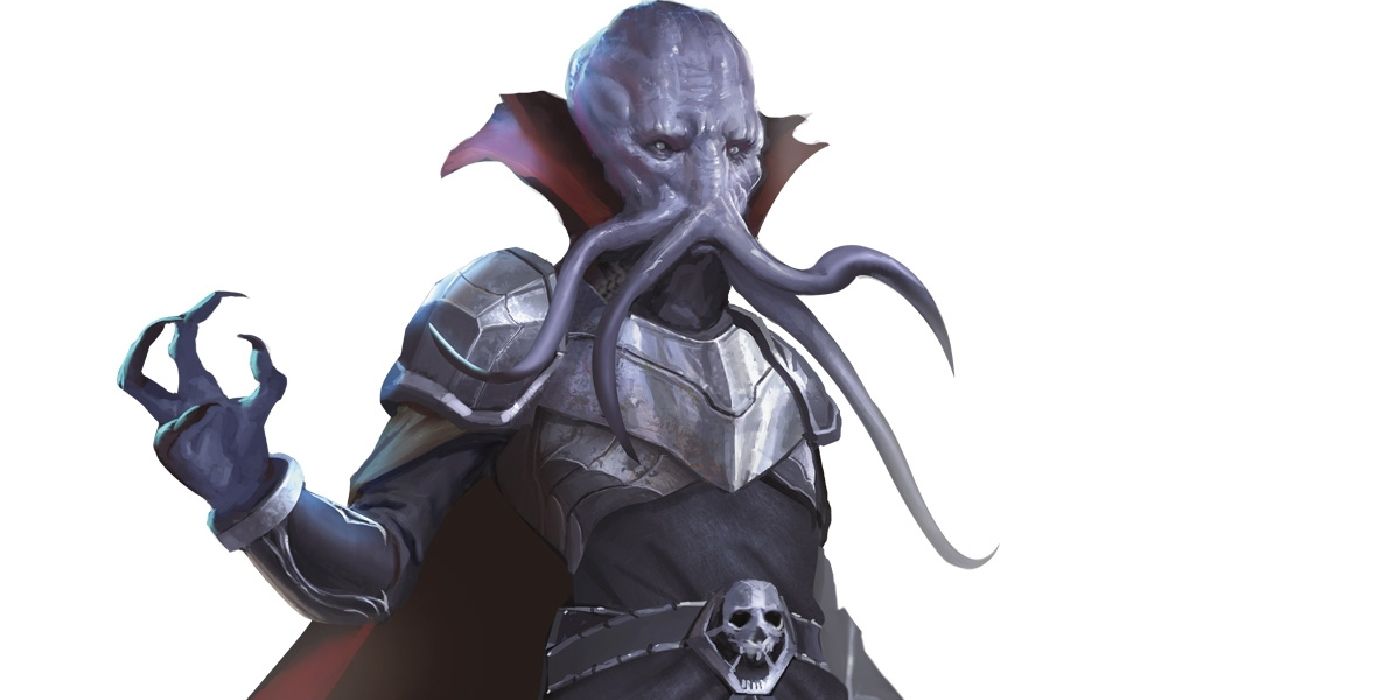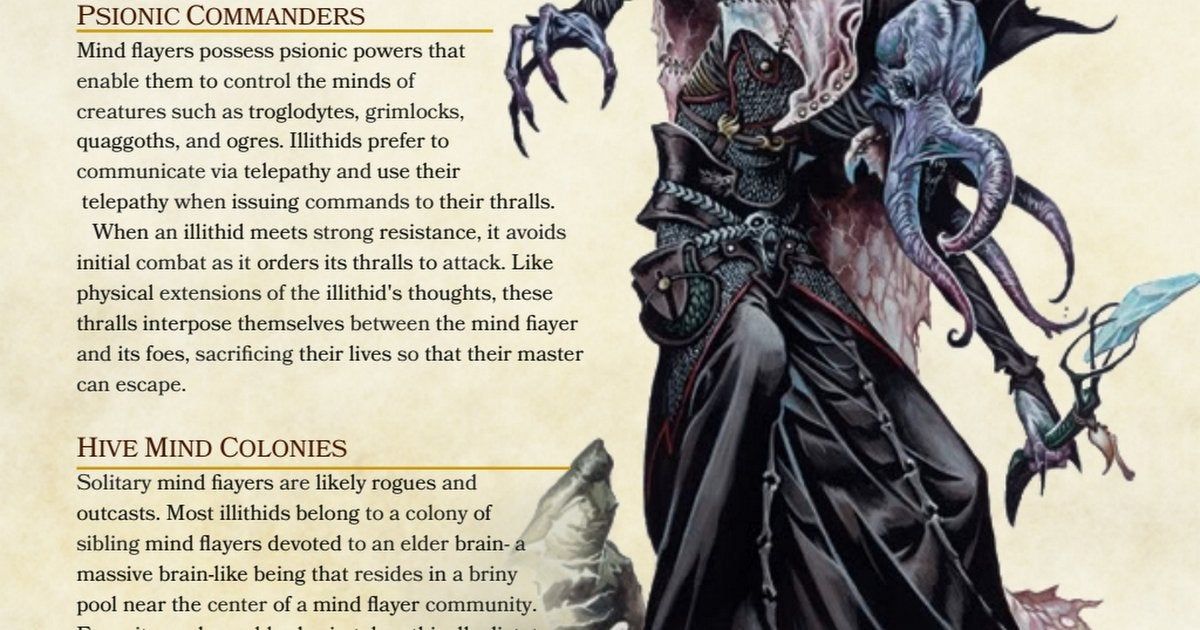Dungeons and Dragons' storied history has been riveted with the surfacing of countless iconic monsters and adversaries since its inception in 1977. Many of these creatures are created based off of mythological creatures from various ancient religions, while others are seemingly conjured up from the brains of legends like Gary Gygax.
Although there are plenty of unique monsters, certain ones seem to not only become popular within the community, but permeate into pop culture as well. One such monster is the Mind Flayer, or Illithid. Odds are most have heard one of these two names at some point, whether in relation to tabletop roleplaying games or as a reference in pop culture, like The Mandalorian's Mind Flayer.
For those unaware, Mind Flayers were originally seen in a Dungeons and Dragons' first edition news letter, where they were described as "a super-intelligent, man-shaped creature with four tentacles by its mouth which it uses to strike its prey." Since that first appearance, the Mind Flayer has appeared in every edition of D&D and is easily one of the most iconic creatures of the franchise. The term Illithid refers to what these creatures call themselves in their native tongue, essentially meaning Mind Flayer.
Mind Flayers reside in the Underdark, the expansive, cavernous, subterranean world beneath the overworld, but this was not always the case. Initially, these tenacious and highly intelligent creatures ruled a massive empire which spanned across multiple planes of existence until one of the many races the Mind Flayers enslaved, the Gith, managed to break free of their mental shackles and overthrow the Mind Flayers. Following this, the Gith hunted the Mind Flayers down, almost resulting in their complete extinction. The Illithid, which also have a role in Baldur's Gate 3, fled to the material plane and opted to hide in the Underdark where they could exert their power and control in relative secrecy.
But what can a Mind Flayer do? Perhaps their most unique and recognizable tactic is also their method of eating. Mind Flayers feast on the brains of their foes by grappling them and sucking their brains out with their tentacles. In doing so, the Mind Flayer is able to not only extract knowledge from its victim, but enslave it, reproduce in it (by implanting parasites), and more. Over time, this parasite will overtake the host and eventually turn them into a brand new Illithid. These fearsome foes can make great tools for dungeon masters in 5e thanks to these unique traits.
Naturally, seasoned adventurers are not want to allow a Mind Flayer to invade their personal space, so Mind Flayers have a number of techniques to aid in reaching their prey. Mind Flayers are naturally not very well built physically, and as such rely instead on mind effecting spells, mental powers, and psionics in D&D 5e. Of note is the Mind Flayer's mind blast ability, which enables it to stun all creatures in a cone, leaving the targets defenseless to the Mind Flayer's probing. Those with weak wills and low wisdom stats would do well to avoid Mind Flayers at all costs, as once one fails this saving throw, there is not much that can be done to save them bar killing the Mind Flayer before it is able to reach the target.
Mind Flayers are a harrowing, mysterious, and powerful race of beings that certainly should not be trifled with. If not for their distaste for working with others and the priority they place on self-reliance, they could pose a real threat to the overworld. For the most part though, they stick to the shadows of the Underdark in solidarity, seeking their next victim and acquiring knowledge slowly overtime. The influence of Mind Flayers began with D&D but has reached far beyond, even into other realms of pop culture. One example of this would be the Mind Flayer from Stranger Things.





